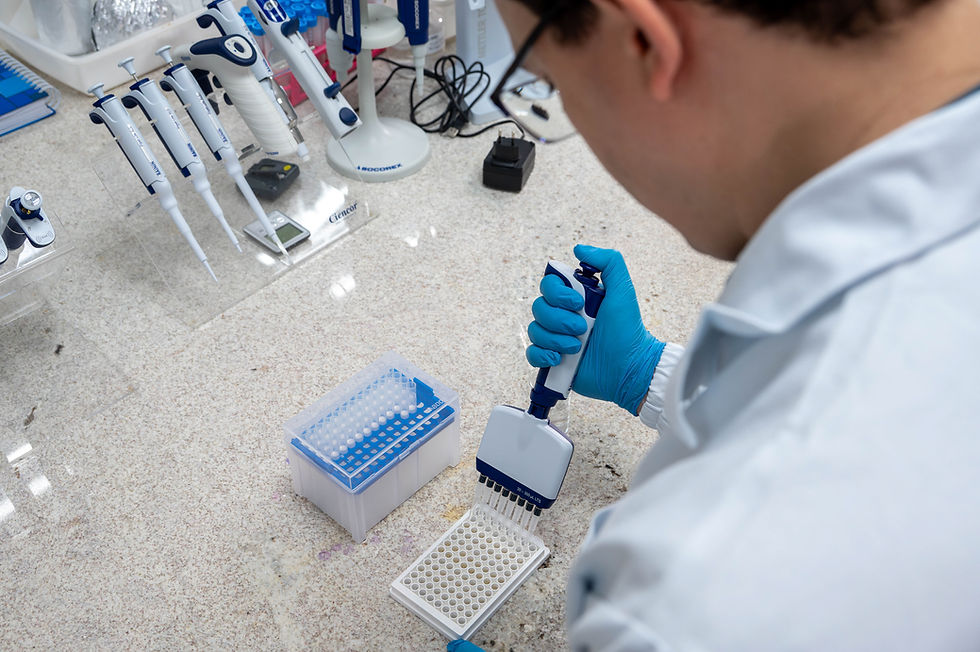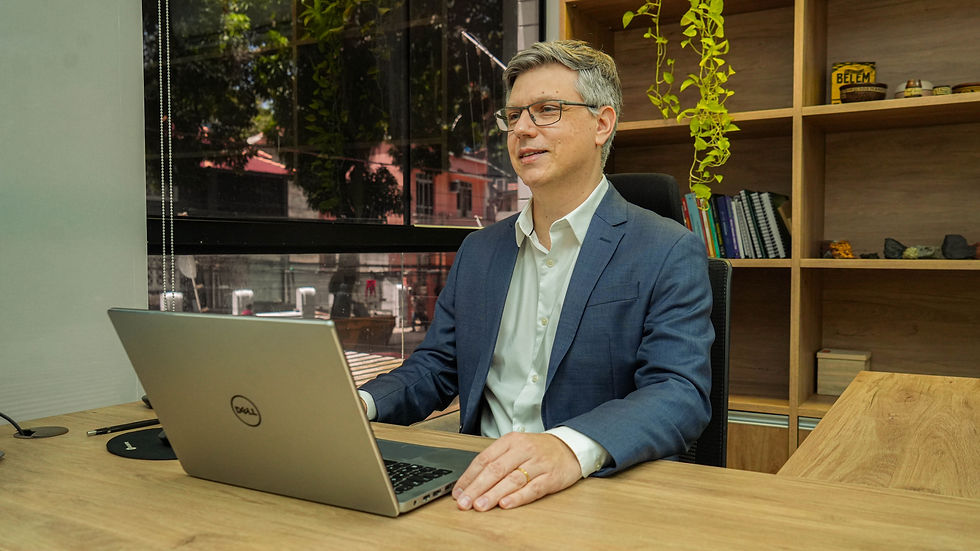New Technologies Foster Sustainable Mining
- Maria Luiza Martins
- Sep 22
- 4 min read

Sustainable and technological alternatives are increasingly seen as the future of mining. The sector, responsible for around 4% of Brazil’s Gross Domestic Product (GDP), according to the Brazilian Mining Institute (IBRAM), faces the challenge of balancing economic development and environmental preservation. To help in this equation, SENAI created, in 2015, the SENAI Institute of Innovation in Mineral Technologies (ISI-TM), headquartered in Belém.
Since then, the institution has carried out research, development and innovation (R&D&I) projects aimed at increasing the competitiveness of mining in the country and offering specialized technological services. Over nearly a decade, 41 projects have been developed in partnership with more than 30 companies, ranging from large mining firms to startups, always focusing on sustainability and innovation in mining.
Adriano Lucheta, director of ISI-TM, explains that the Institute works with four major research areas focused on: the development of clean technologies and mineral biotechnology; circular economy; digital transformation; and health and safety in mining. “Over almost 10 years of operation, ISI-TM already has several success stories in projects aimed at adding value to mining tailings and waste into new products, as well as projects using artificial intelligence, computer vision and virtual reality to increase safety in mining operations,” he says.

“We recognize the importance of the mining sector for Brazil’s economy, food security and sovereignty. For this reason, the SENAI Institute of Innovation in Mineral Technologies has been working for nearly 10 years with the mission of supporting the transformation of mining into a low-carbon, sustainable, environmentally and socially safe economy.”
—Adriano Lucheta, Director of the SENAI Institute of Innovation in Mineral Technologies (ISI-TM)
Technology and Innovation

This strategic work has been strengthened through partnerships. The Vale Institute of Technology – Sustainable Development (ITV-DS), which has been fostering research and knowledge in the region for 15 years, has supported ISI-TM since its foundation. Currently, the two are developing joint projects focused on sustainability in the sector.
“SENAI Institute is our main partner,” says José Bittencourt, a researcher at ITV-DS who closely monitors both projects. According to him, ISI-TM is essential because it provides a multidisciplinary team and cutting-edge technologies for developing solutions.
Among the ongoing partnership projects, one highlight is the use of basalt powder, considered a mining sterile, as a soil remineralizer, also functioning as an atmospheric CO₂ sink. The initiative seeks to harness the potential of this type of rock to restore soil fertility in agricultural or degraded areas, stimulate plant growth and, at the same time, capture atmospheric carbon. According to Bittencourt, the project goes beyond the simple application of basalt powder. “Our project is using local bacteria, working with these bacteria to combine them with basalt as a biotechnological mechanism to accelerate the rock’s reactivity. So it’s like a ready-made recipe. The producer applies it in the environment and ends up fixing carbon.”
In addition to aiding reforestation and the recovery of degraded areas, the methodology can also be applied in agriculture, offering a more sustainable and less polluting alternative compared to conventional fertilizers. The differential lies in the combination of basalt powder with native phosphorus- and potassium-solubilizing bacteria, forming a kind of “biotechnological recipe” that accelerates nutrient release and carbon capture. With positive results in field experiments and scalability under development, the replication potential of this model is global, adaptable to different regions and ecosystems, serving as a large-scale tool for decarbonizing the planet.
Another project conducted by ISI-TM in partnership with ITV-DS involves the biocementation of the Ferruginous Canga of Carajás through the application of iron-reducing microorganisms. For Adriano Lucheta, the most interesting aspect of the project is the ability to accelerate a natural process that, without intervention, would take centuries or even millennia. He explains that, by applying microorganisms cultivated at ISI-TM in the Canga areas, it is possible to accelerate the biocementation process and restore already mined areas, allowing the reintroduction of native plant species and contributing to the conservation of local biodiversity.
Sustainability on the Agenda
The Ferruginous Canga restoration and basalt powder application projects are just two examples within ISI-Mineral Technologies’ broad portfolio in the pursuit of sustainability. Additionally, the Institute has also stood out in coordinating strategic actions for COP30, in Belém. As part of the COP+ Journey, ISI-TM leads activities focused on digital transformation and innovation, with solutions tailored to the Amazon reality.
Among the initiatives developed are innovation marathons (hackathons) involving professionals and university students. In two editions, the hackathons promoted by the COP+ Journey addressed the themes “Sustainable Constructions in the Amazon” and “Sustainable Mining for a Low-Carbon Economy.” According to Adriano, the purpose of the second marathon was to promote ideas aimed at energy matrix conversion, logistical improvements, and more sustainable practices in the mining sector, focusing on global emission reduction targets. “Mining is extremely fundamental for the global energy transition, and mining companies also have their own decarbonization targets. The idea of the hackathon is for participants to develop projects to reduce emissions in the mining chain, and for these projects to eventually be implemented by mining companies, contributing to the sector’s decarbonization,” says Lucheta.
Featured Projects
Basalt Powder: soil remineralizer that combines minerals and native bacteria, restores degraded areas, and helps capture carbon.
Carajás Canga: application of microorganisms to accelerate the recovery of ferruginous Canga and reintroduce native species, preserving local biodiversity.







